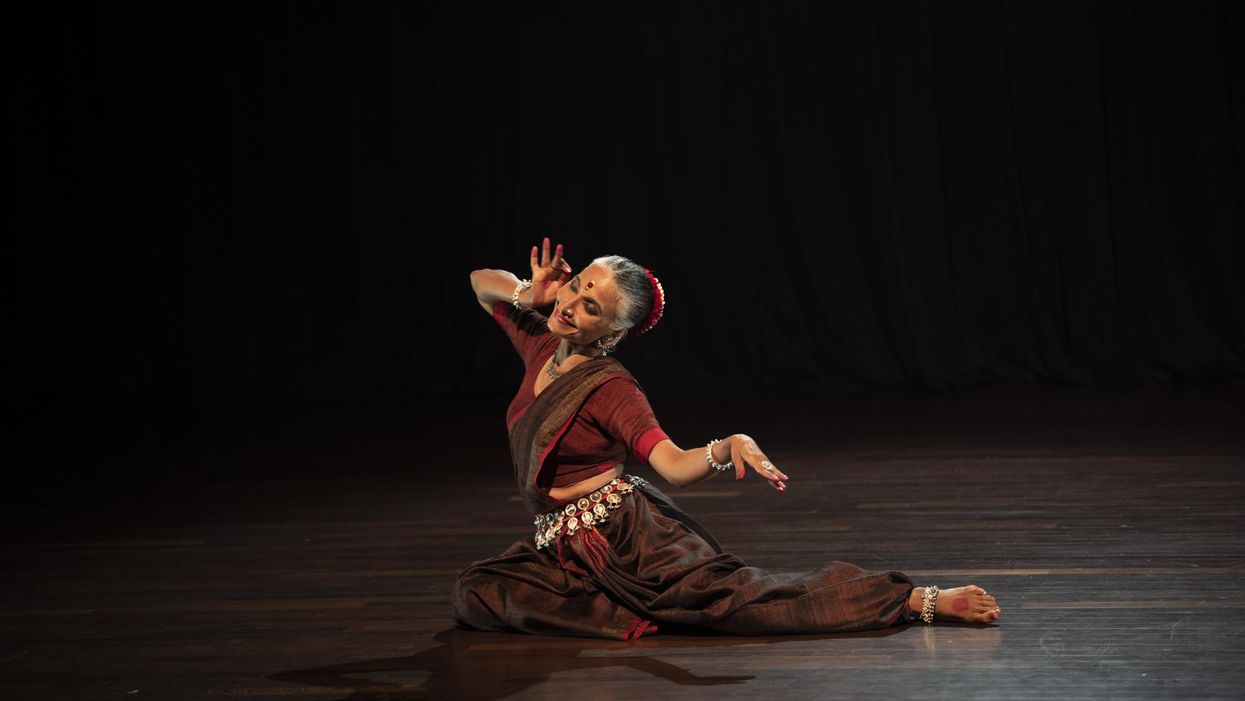How Odissi Artist Bijayini Satpathy Subtly Transformed Her Movement Language
Bijayini Satpathy was supposed to spend much of last year on her first tour as an independent artist. For 25 years, she had been a dancer and teacher at Nrityagram, a community in southern India devoted to the study and performance of Odissi. Instead of her planned solo tour, Satpathy entered a period of intensive creativity and self-discovery. She worked alone for months, further exploring a personal movement language that pushes at the edges of this exquisite classical dance she has been practicing her whole life. “The pause kept me focused and grounded, with a purpose,” she says. One result is her new evening-length solo, Abhipsaa, which she will perform at Duke University December 10–11. After that, she will begin her yearlong tenure as artist in residence at New York City’s Metropolitan Museum of Art.
You’ve been working on your own for months. How has that research informed your new work, Abhipsaa?
In Sanskrit, Abhipsaa means “a seeking.” It is my first choreographic commission, and it is really about figuring out what it is that I want to do with my dancing. Physically, how do I want to express Odissi after so many years of dancing it?
What are some of the evening’s themes?
Odissi thrives on this understanding of the eternal love between Radha and Krishna. I wanted to explore that idea of separation and longing. So often the stories are about the woman pining for the man, but I wanted to take some time to explore Krishna’s suffering, which is really about the universal sense of separation from where you belong. And there is also the theme of spiritual seeking, the seeking shared by all humanity.

In an excerpt you performed virtually through the Baryshnikov Arts Center platform in February, it looked like you had subtly altered the way you present yourself onstage. You’ve let your hair go gray and you are wearing fewer of the classical decorations associated with Odissi.
There is a transition going on in me. I want to minimalize decor, because I feel the body contains volumes of expression. There is so much in the vocabulary of Odissi, in the face, in the gestures. The language is so powerful. I want to allow the appearance to be simple so that those things can be fully expressed.
What are your plans for the residency at the Metropolitan Museum?
I’m planning to work with the geometric, architectural contours of the spaces. I’m going to look at what these spaces are about, to put myself in another time, another culture, and see how they speak to me as a traditional Odissi dancer. One of the spaces I was very drawn to when I visited was the Spanish chapel at the Cloisters. I also want to do something in the Astor Chinese Garden Court. Some of these inspirations will culminate in a full-length performance at the theater at the Met.
What new aspects of Odissi have you discovered through this process of solo exploration?
I’ve been so surprised to discover that there are so many more ways of speaking through Odissi. I’m still using the classical S-curves of the body, the tribhanga. But I’m finding newness in my way of moving. Odissi is a way of breathing, a way of rising and falling, a way of carving the space. It allows a lot of freedom. I feel I could explore it for the rest of my life.




